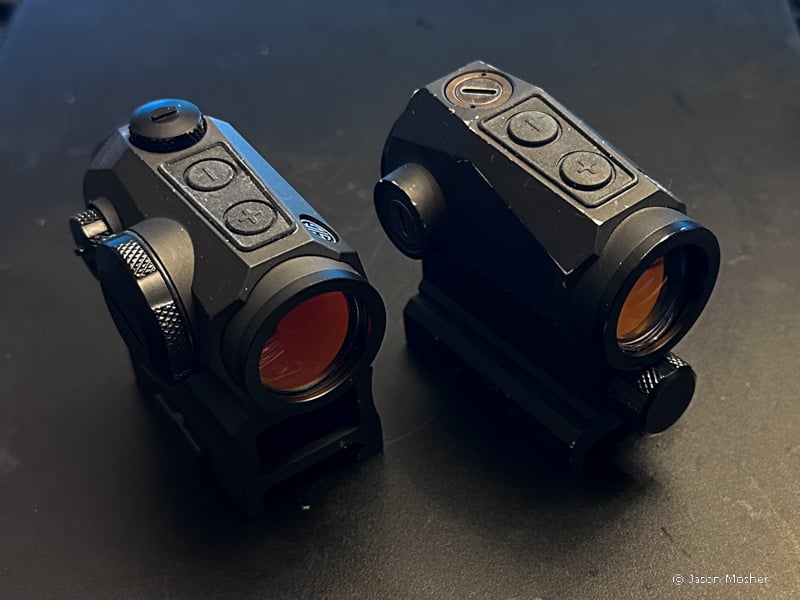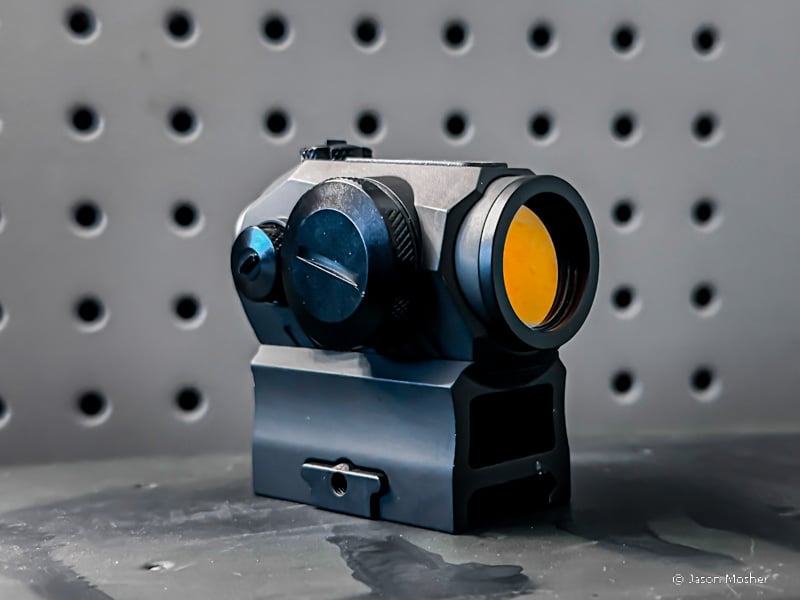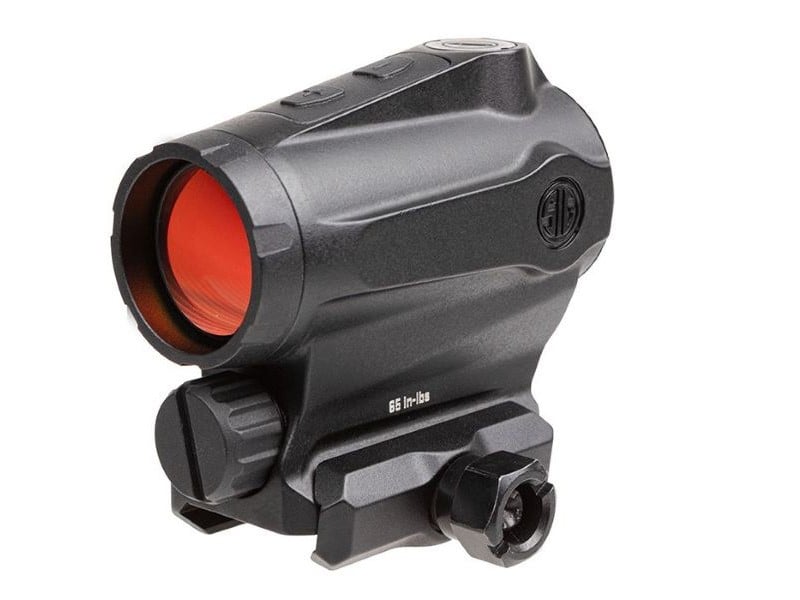Have you wondered what the difference is between the Sig Romeo 5 and Romeo 5X? Sig Sauer is primarily a gun manufacturer, but they have also built up an impressive selection of optics, including scopes, magnifiers, and red dots. Their Romeo line of red dots has become quite popular and is used on many AR-15 rifles and handguns. Most of their Romeo series are identified by numbers, like the Romeo 7, Romeo 4, etc. Some of their optics have the same number with a second letter or number to identify a change.

What’s the difference between the two? But before we get into that, let’s first look at the Romeo 5 and what it has to offer.
Romeo 5 Red Dot
Sig’s Romeo 5 red dot is a simple red dot optic that uses two push-button controls on the top of the optic. To turn it on, press and hold the plus or minus button for three seconds. Repeat this step to turn the optic back off. It has 10 illumination settings, two of which are NV. It’s powered by a CR2032 battery that loads in the side of the optic. While the CR2032 is a little coin-cell battery, it will power the Romeo 5 for more than 40,000 hours.

I’ve said many times in the past that I also prefer larger batteries in optics when possible. When Sig first introduced the Romeo 5, the battery was something I wished they had done differently. But that’s one thing Sig changed with the Romeo 5X, which we will get to next. For a $140 optic, the Romeo 5 is a great deal for anyone wanting quality at an affordable price.
Romeo 5X Red Dot
So, what’s the difference between the Romeo 5 and this one? There are several things, but first, I want to mention the generation of this optic. Sig does a great job updating optics to ensure each model stays relevant in today’s high-tech world of optics. My Romeo 5X is a generation 1, which is an enhanced version of the Romeo 5. I’ll cover a few of the upgrades from the Gen 1 to the Gen 2 next. But first, let’s talk about the main differences between the Romeo 5 and the Romeo 5X.

The other noticeable difference is the elevation and windage adjustment controls. On the Romeo 5, metal caps cover the adjustment knobs to protect them from being bumped. With the Romeo 5X, the adjustment knobs sit flush with the optic, so they cannot be turned without a small flathead screwdriver. Sig also provides a sight key with an optic that has a flathead tip on it. Other than that, the two optics are about the same. I feel the 5X improvements make it worth the extra money.
Romeo 5X Gen II
After Sig updated the 5X, the Gen II version has even more enhancements than previously, and they’re all good. They added a cross bolt mount, making it easy to take the optic on and off by hand or with a flathead screwdriver. The battery lid has also been updated and now has a groove for a flathead screwdriver in case it’s too tight to get off by hand. The final noticeable difference is a slight change in the design of the frame. The plus and minus buttons are angled a little, and the overall frame has a rounded look. It retails for about $150.00.

Romeo 5: Three Great Versions, One Great Dot
For the slight difference in price, it only makes sense to buy the newest model, which is the Romeo 5X Gen II. It has a newer look and the latest upgrades. But even when you look at the original Romeo 5 red dot, it’s a great optic for the price. It can be used on an AR-15, shotgun, or any other rifle, PCC, or sub-gun with a Picatinny rail. I may even break down and buy the Gen II because I like my 5X so much. All three versions have a multi-coated lens.
If you want to add a magnifier, Sig offers the Juliet flip-to-side 3X magnifier that works great with the Romeo 5 models. Sig even sells the two as a set if you want to save money by bundling your optic and magnifier. There are lots of good optics on the market, but this is one worth checking out. Mine has been thrown around quite a bit over the years and it’s still running strong.


